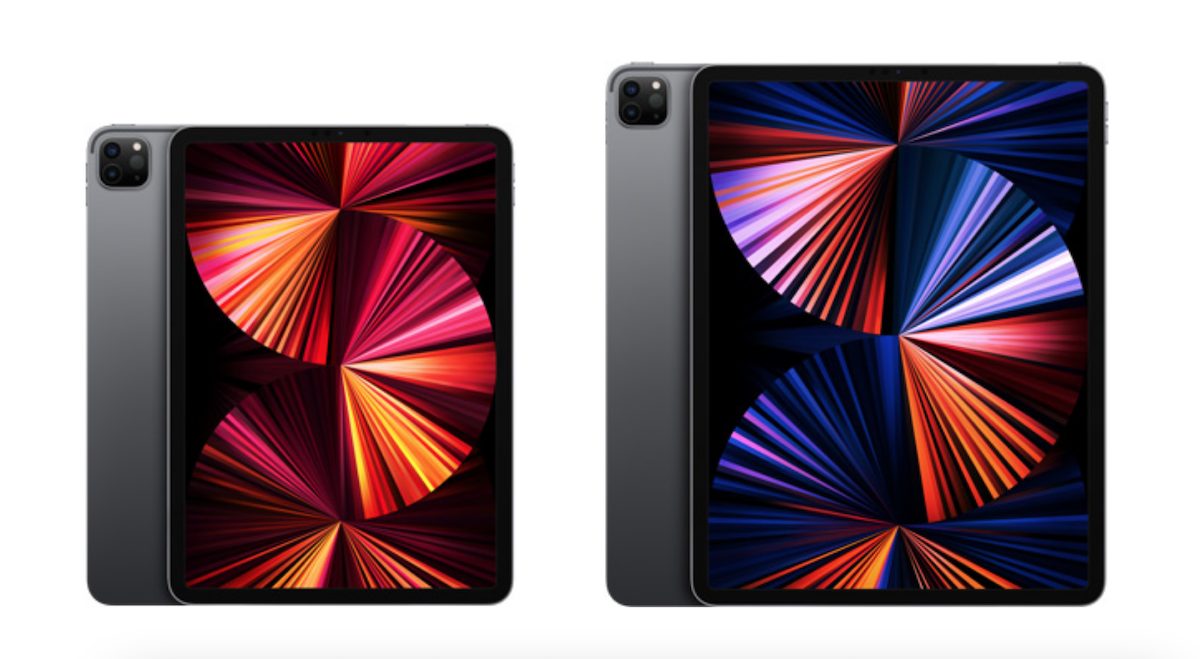Apple’s new M1 iPad Pro models are finally in the hands of consumers. The next-generation iPad Pro models come with ultra-fast 5G connectivity, Liquid Retina XDR display, enhanced performance, and more. The M1 iPad Pro also features an all-new 12MP Ultra Wide front camera which offers a Center Stage experience for video calls. The 2021 iPad Pro models combine a stunning display with stellar performance, according to the first batch of reviews published.

M1 iPad Pro review round-up: excellent display, stellar performance but incomparable to Macs
CNET’s Scott Stein says that navigation and app launches feel “lightning-quick” on the M1 iPad Pro but it’s “hard to tell how deep that power runs.” According to Stein’s benchmark test, the iPad Pro M1 processer is basically the same as the one on other M1 Macs.
The first thing I did, of course, was benchmark the M1 iPad Pro. My high-end review units from Apple, to be clear, have 1TB of storage and 16GB of RAM, while entry-level iPad Pro models only have 8GB of RAM. You need to pay for 1TB of storage or more to get that 16GB RAM option.
The gains in performance for single-core speed aren’t all that dramatic, but in multicore tests it leaps well above the 2020 iPad Pro, or the iPhone 12 — or any other tablet I can think of. In both Geekbench 5 and 3DMark Wildlife Extreme, it’s clear that the iPad Pro M1 processor (with an eight-core CPU and eight-core GPU) is basically the same as those other M1 Macs.

The 12.9-inch M1 iPad Pro features a Liquid Retina XDR display. The advanced mini-LED display technology delivers improved contrast, higher brightness levels, and more to enhance the creative process. The Verge’s Dieter Bohn says that it is “very easy to miss the benefits of Mini LED in normal day-to-day use.” However, the magic of the upgraded display is highlighted when you are viewing videos or photos on full-screen.
The magic kicks in when you are viewing videos or photos in full-screen. When you do that, the iPad Pro kicks into a different HDR mode (or in Apple’s parlance, XDR, for “Extreme Dynamic Range”) that really is stunning. The overall max brightness of the screen jumps up to a powerful 1,000 nits and peak brightness for certain lighting can hit 1,600 nits.
Apple’s M1 iPad Pro features a new Center Stage mode for video calls. Center Stage, a face-following digital zoom feature, uses the Ultra-Wide camera and machine learning to change the way users participate in video calls. As users move around, the camera automatically pans to keep them center in the frame. MacStories’ Federico Viticci was impressed with her testing of Center Stage.
“When you first try Center Stage during a video call, the effect is both eerie and charming: at first, it’ll look like the camera inside the iPad is physically moving, or like there’s a remote camera operator secretly controlling the ultra-wide camera to keep you properly framed. Instead, Center Stage is the result of the clever combination of an ultra-wide field of view and real-time cropping powered by machine learning. It is, quite possibly, the best answer to the “cool, but what can machine learning actually do?” question I’ve seen to date.”

The Guardian’s Samuel Gibbs says that the M1 iPad Pro is an excellent device in terms of battery life, chipset, and display. However, at the end of the day, it is just a tablet and has limitations as a PC/Mac replacement.
The 12.9in iPad Pro for 2021 is quite a device. It has one of the very best displays, making it killer for video. It has a lot of power with the M1 chip and a reliable nine-plus hours of battery life. It even has Thunderbolt 3 connectivity and optional 5G.
However, at the end of the day it’s still just an iPad, which means dealing with some limitations as a computer replacement compared to a similarly priced laptop. But it is the sort of multipurpose device that becomes invaluable, whether it’s for the best-in-class video calling experience, the broad media app support or even the novel uses such as tennis coaching, art production or even video editing.

iMore’s Daniel Bader says that M1 iPad Pro is “getting closer to being the only computer many people need” but the constraints built into iPadOS offer “an advantage when it comes to doing one thing at a time as well as possible.”
The iPad Pro delights me. When you get past the hand-wringing about whether it can emulate a MacBook and try to embrace the potential in its in-betweenness, it’s a really fascinating and useful computer.
But Apple’s biggest issue with the iPad Pro has not changed since the first Pro tablet debuted more than half a decade ago: it’s expensive. The fact that Apple hasn’t balked at this fact and instead continues to raise the price of the larger model means it’s likely unconcerned about the thing I’m concerned about: are people buying this thing in addition to a laptop or instead of one?
In conclusion, the M1 iPad Pro is fast, offers excellent battery life, and has an impressive camera that keeps you in the center of the frame during video calls. However, it is quite expensive, making it a good purchase for creative professionals that need portability for working on the go.
Read more:
2 comments